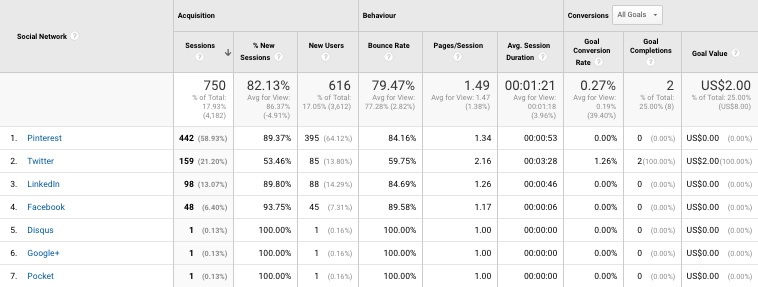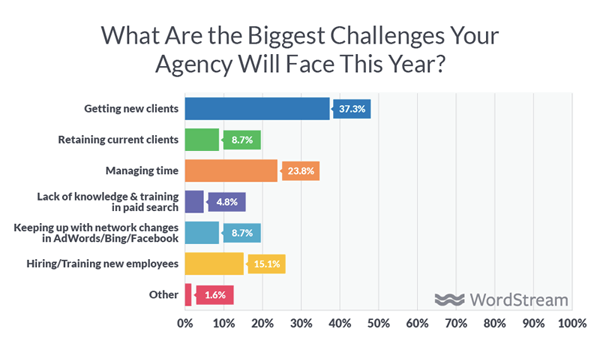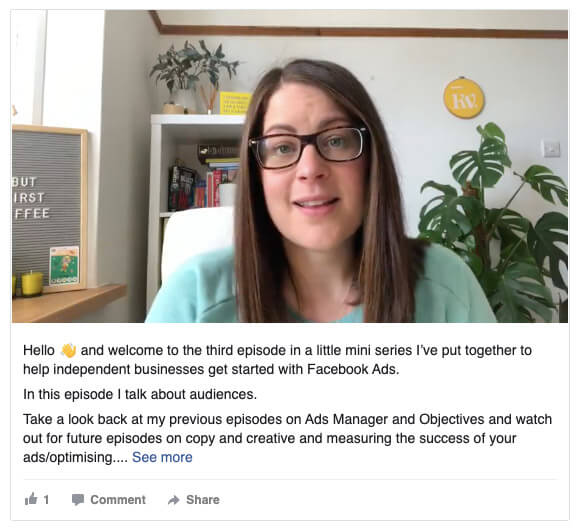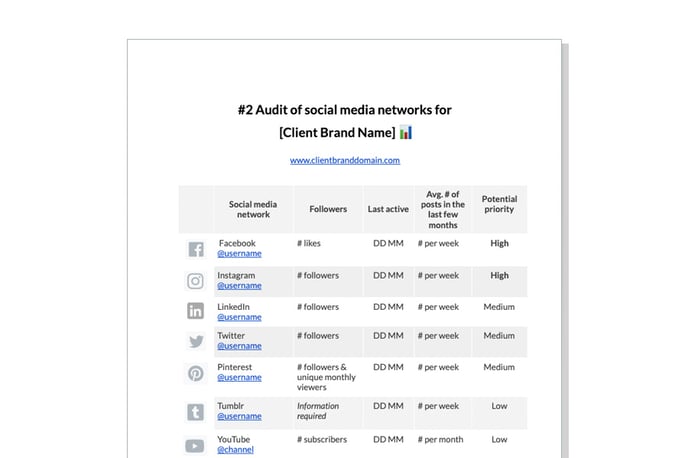Emphasise the benefits of social media to the client to keep reinforcing the value you provide
Sometimes it’s easy for clients to forget why they hired you in the first place.
So once you’re up-and running, it’s worth mentioning the benefits of social media as a way to reinforce the value you’re providing through your services.

Here are some of the reasons why social media can prove valuable to your client's business:
#1 - Social media is free to use, apart from paid ads. But it can become time-consuming, and that’s probably one of the reasons you’re managing your clients’ accounts.
#2 - Consistent posting on relevant social media channels helps shape the personality of a brand.
#3 - Social media is a future-proof channel for your marketing, as statistics show the continuing growth in users.
#4 - Social media allows you to participate in two-way conversations to build engagement with your community.
#5 - And as a by-product of engagement, your audience become advocates of your brand, adding micro-influencer power to the marketing.
#6 - Social media provides one of the softest conversion points you have, as it’s easier to join a conversation rather than sign up for a newsletter or make a purchase.
#7 - Social media can help you get an SEO boost, especially when content receives a high number of shares. Plus, higher engagement on social media will drive more users to click and read your blog or website thanks to social proofing.
#8 - Social media can become a stable source of traffic – if you get it right. As your client’s social media presence grows, the more people will grow to trust the brand, share their content, and recognise it as awesome stuff.
How often should you publish on social media?
As a social media agency, you want to achieve the best results for your clients from each social media post. So how do you decide on the optimal publishing frequency?
First up, there’s no magic formula. Each brand you manage is different, so what works for one won’t necessarily work for another. That’s why each client you manage requires a custom plan on the back-end.
So, instead of seeking magic formulas, inform your clients that their customised marketing plan will focus on these proven posting strategies:
- Posting consistency is more important than posting frequency.
- Content quality is more important than content quantity (and social media networks are letting us know with all the changes).
- Without having an objective for social media, you won't know if your posts are successful or not.
Tip: All three strategies should be woven into your proposal to set the right expectations and shift your client's thinking towards the "quality over quantity" mindset.
How far ahead should you schedule social media posts?
There are distinct advantages and disadvantages to scheduling your social media content. But if you do it right, you can make it work for your clients.
Scheduling your clients’ social media posts is an excellent way to maintain a consistent stream of content across multiple platforms. Plus, it allows you to post content when you're offline; e.g. outside of office hours or working in different time zones.

But if you schedule too far ahead, you can lose track of what you’ve planned. Plus you need to be flexible enough to react to spontaneous events or trends.
Different niches and industries move at different speeds, so you’ll have to factor that in for each client.
For example, the blockchain and cryptocurrency industries are fast-paced and time-sensitive, so scheduling one week in advance is far enough. But the travel industry moves much slower, so you can schedule weeks in advance.
But remember, however far ahead you decide to schedule your social media posts, you need to be able to:
- Ensure the content is relevant.
- Pivot quickly if circumstances change.
- Track the performance and adjust the campaign if required.
Social media scheduling, when done right, is a great time-saver. But it's not a replacement for human interaction! You still need to be present on each social network day-to-day to engage with followers and ensure your clients’ content remains fresh.
How to create an effective social media plan for clients
Having considered how often you’d like to publish content and how far ahead to schedule the posts, you’re in a position to create an effective social media plan for your clients.
Here are the key things to consider:
Step 1 – Make sure you know the goals for your social media plan. Your proposal should have outlined this already, but make sure everyone on the team knows what the overall objective is.
Step 2 – Audit the social media networks you’ll focus on so you have a benchmark to compare against.
Step 3 – Plan the content and create a social media calendar. Make sure you have the right mix of content – original vs curated and different types.
Step 4 – Nail your client’s branding and voice as you create each piece of content and populate the calendar.
Step 5 – Schedule the content with approval and engage with fans and followers.
Step 6 – Monitor and measure your results.
Step 7 – Adjust your plan accordingly.
Tip: The terms “social media plan” and “social media strategy” are used almost interchangeably. However, if you wanted to get picky about it, the strategy focuses on high-level goals (similar to what you outline in the proposal) whereas the plan is the methods and activities to achieve said goals.
How to make sense of social media data and prove ROI to the client
A big part of managing social media marketing for your clients involves reporting. Each client is investing money in you to deliver results, and they’ll expect to see a progress report each month.
Providing a raft of social media activities is one thing, but how do you actually prove they're beneficial to your client?
According to eMarketer, the toughest challenge for social media marketers is measuring ROI.
It's not that there's a shortage of social media insights and metrics. It’s the challenge of making sense of the data and reporting on it in a meaningful way to clients.

Before you dive into the various sources below, make sure you know what you want to measure and how you’re going to measure it; e.g. growth in followers, increase in traffic or leads generated.
#1 - Each social network provides insights and analytics to help you understand how your brand is performing. Tap into those first.

#2 - Google Analytics allows you to extend your data capture by tracking website activity. For example, you can see which social networks your visitors came from, how long they stayed on your site, check which content they downloaded (lead generation), and much more.

Pro Tip - You can enhance the Google Analytics data by using UTM values, so you can prove that your clients are getting a return on their social media investment.
#3 - Consider using a social media analytics tool that combines the best of the previous sources in one place.

Once you've decided on how you're going to track and report growth for your clients, you can extract the correct data from the appropriate sources and report on your performance.
Celebrate small wins and keep clients in the loop
Every time you achieve a milestone, it’s a cause to celebrate. Here’s why:
- It makes you and your team feel proud of your achievement.
- It makes your client aware of the progress you’re making to help grow their brand.
These don’t have to be limited to big wins. Keep chipping away at the overall goals with small wins along the way, and make celebrations a part of your regular client review meetings.
Here are some ideas on what you can share with your clients:
- Positive reviews
- User-generated posts
- Mentions by other brands
- News in their industry
- Tips on social media in general.































 Social Media Strategist
Social Media Strategist  For
For  It’s how social media strategist
It’s how social media strategist 
 Image source:
Image source: